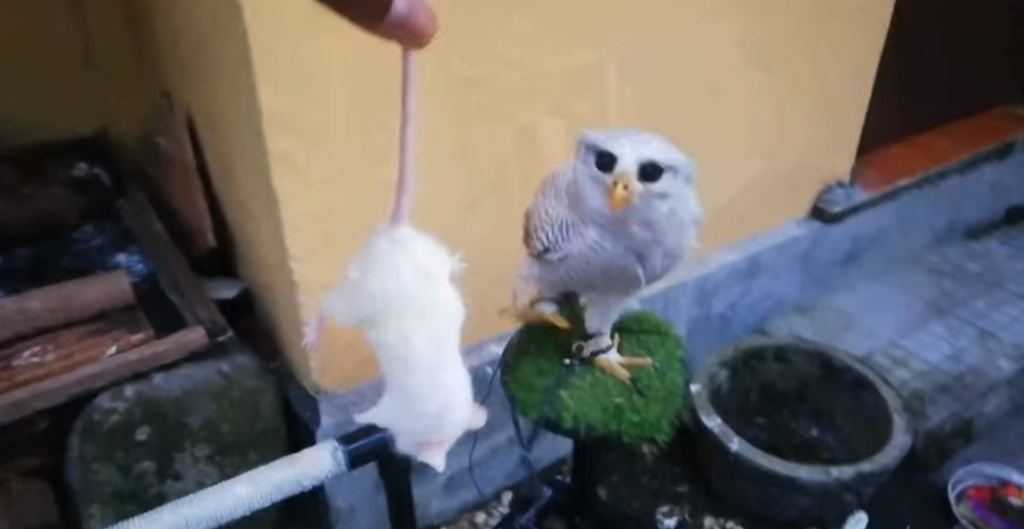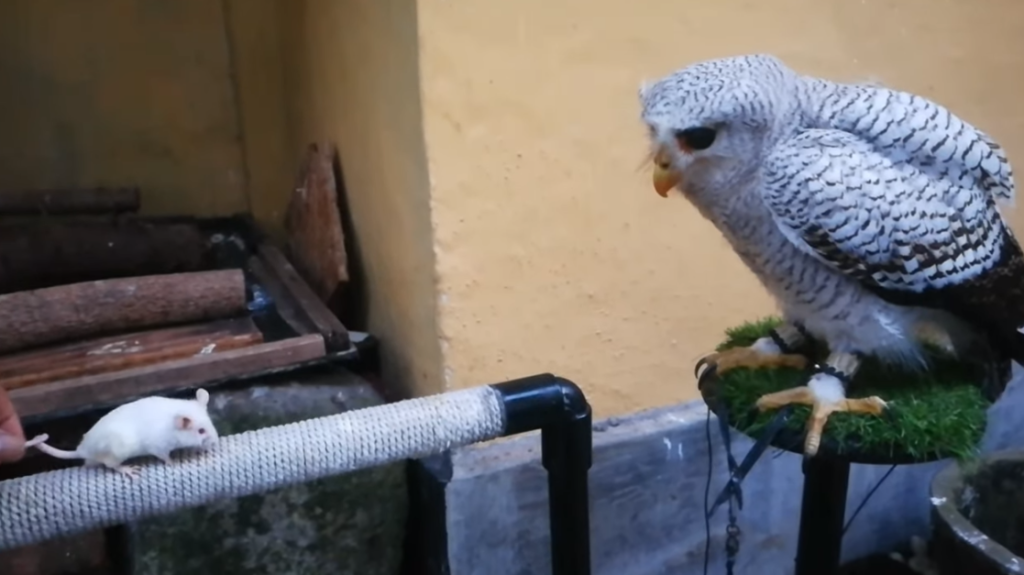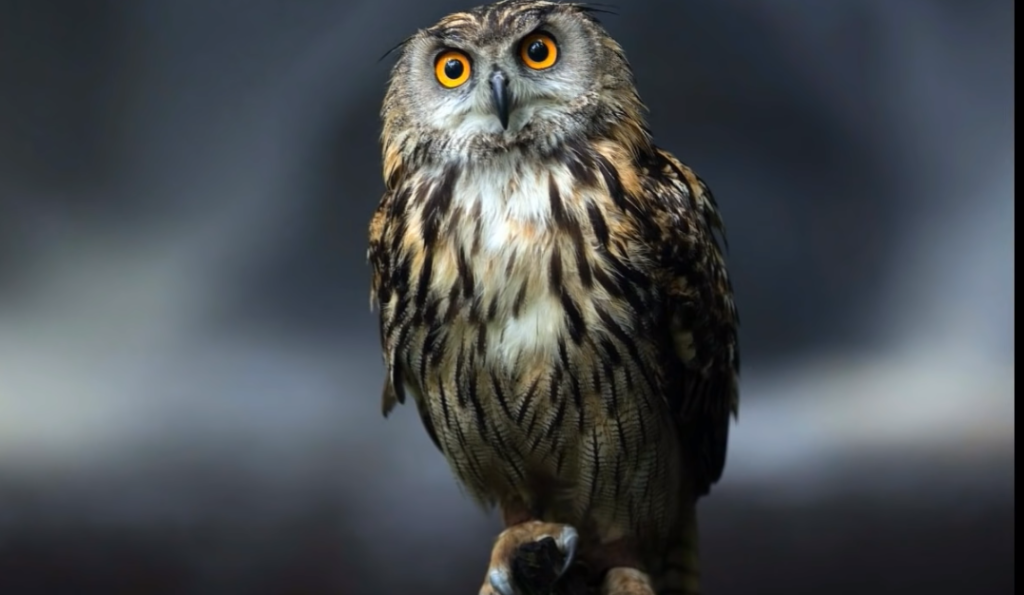Are you fascinated by these majestic creatures of the night and considering keeping an owl as a pet? Feeding an owl at home requires special knowledge and attention to ensure their well-being.
It is illegal to keep owls as pets in most countries. Owls are wild animals that have their own natural instincts and needs, and they cannot be properly cared for in captivity.
To cater to your feathered friend’s dietary needs accurately, it is advisable to consult with avian specialists or licensed wildlife rehabilitators who can guide you through the process.
In this article, we will provide you with essential tips on how to feed owls properly, offering insights into their dietary needs and the best practices for maintaining their health in a domestic environment.
How to Feed an Owl at Home?
It is illegal to keep owls as pets in most countries. Owls are wild animals that have their own natural instincts and needs, and they cannot be properly cared for in captivity.
If you find an owl that is injured or orphaned, you should contact a wildlife rehabilitation center.
If you are considering feeding an owl, there are a few things you should keep in mind:
How Do You Feed an Owl Pet?
Owls are carnivores and need to eat meat. Their diet consists of small mammals, such as mice, rats, and rabbits, as well as birds, reptiles, and amphibians. The amount of food an owl needs depends on its size and species.

A small owl may only need to eat a few mice per day, while a larger owl may need to eat several rabbits or birds per day.
Owls should be fed whole prey items, not just pieces of meat. This helps them to get the nutrients they need. Owls should be fed in a quiet place where they will not be disturbed.
What Is the Best Food for Owl?
The best food for an owl is its natural prey, which includes small mammals, birds, reptiles, and amphibians. The exact diet of an owl will vary depending on its species and size.

For example, a small owl like a barn owl may eat mostly mice and voles, while a larger owl like a great horned owl may eat rabbits, squirrels, and even skunks.
What Can I Feed Baby Owl?
Baby owls, also known as owlets, eat small mammals, birds, reptiles, and amphibians. The exact diet of an owlet will vary depending on its species and size.

For example, a small owlet like a barn owl may eat mostly mice and voles, while a larger owlet like a great horned owl may eat rabbits, squirrels, and even skunks.
You can feed the owlet the following:
How Do You Give an Owl Water?
Here are some ways to give an owl water:
If the owl is injured or unable to drink on its own, you may need to help it drink. It is important to be gentle and patient when giving an owl water.
Here are some additional tips for giving an owl water:
Preparing the Owl’s Diet
Feeding an owl at home requires careful planning and preparation to ensure its nutritional needs are met. Here are some essential steps to follow when preparing the owl’s diet:
Feeding Techniques for Owls
Feeding owls at home requires careful consideration of their dietary needs and the appropriate techniques to ensure their health and well-being. Here are some feeding techniques to follow:
Maintaining a Healthy Environment
To ensure the well-being of your pet owl, it is crucial to maintain a healthy environment. Here are some important factors to consider:

- Size: Owls require ample space to move around comfortably. The size of the enclosure should be suitable for your specific owl species.
- Perches: Include sturdy perches at varying heights to allow natural movement and exercise.
- Nesting Areas: Create appropriate nesting areas with soft bedding materials where your owl can rest undisturbed.
- Temperature: Maintain an optimal temperature range based on your particular owl species’ requirements.
- Lighting: Provide both natural daylight and artificial light sources that mimic their natural habitat.
- Remove droppings, feathers, and uneaten food daily.
- Clean perches, nesting areas, and any other equipment regularly using bird-safe disinfectants.
- Toys: Offer various toys such as puzzle feeders or objects that encourage natural hunting behaviors.
Watch Video: How to Feed an Owl at Home?
Conclusion: How to Feed an Owl at Home?
Feeding an owl at home requires careful consideration and adherence to certain guidelines. Owls are fascinating creatures that can make unique pets, but their dietary needs must be met for them to thrive in a domestic setting.
It is crucial to provide owls with a varied diet consisting primarily of whole prey items such as mice, rats, and chicks.
Supplementing their diet with commercial owl food or high-quality cat food can also help ensure they receive all the necessary nutrients.
It’s important to avoid offering owls any human food or processed snacks as these can be harmful to their health.
FAQs
What Do Owls Eat?
Owls are carnivores and eat small mammals, birds, reptiles, and amphibians. The exact diet of an owl will vary depending on its species and size.
For example, a small owl like a barn owl may eat mostly mice and voles, while a larger owl like a great horned owl may eat rabbits, squirrels, and even skunks.
How Often Should I Feed an Owl?
The frequency of feeding an owl will depend on its age, species, and activity level. Baby owls need to be fed more often than adult owls. Generally, owls should be fed once every day or two.
How Much Should I Feed an Owl?
The amount of food an owl needs will depend on its size and species. A small owl may only need to eat a few mice per day, while a larger owl may need to eat several rabbits or birds per day.
What Should I Avoid Feeding an Owl?
You should avoid feeding owls any food that is not part of their natural diet. This includes foods such as bread, milk, and cat food. These foods can be harmful to owls and can even make them sick.
How Do I Feed an Owl?
You can feed an owl by hand or by placing the food in a bowl. If you are feeding the owl by hand, it is important to be gentle and patient. The owl may not be used to being handled, and it may take some time for it to trust you.
Where Should I Keep an Owl?
If you are keeping an owl in captivity, it is important to provide it with a safe and secure enclosure. The enclosure should be large enough for the owl to fly and exercise. It should also be predator-proof.
How Do I Take Care of An Owl?
In addition to feeding and housing, you will also need to provide your owl with fresh water, toys, and perches. You will also need to take your owl to the vet for regular checkups.




